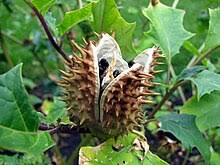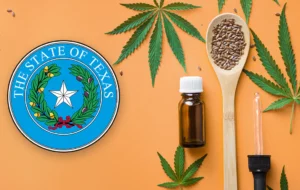Devil’s Weed Plant, The plant world is full of fascinating species, some cherished for their beauty and others feared for their danger. Among the latter lies the notorious Devil’s Weed plant, a term often used to describe highly toxic plants, particularly belonging to the Datura genus. Revered, feared, and misunderstood throughout history, Devil’s Weed has a dual nature—it offers medicinal potential but also harbors a dangerous and often deadly reputation.
What is Devil’s Weed?
Devil’s Weed usually refers to Datura stramonium, commonly known as Jimsonweed or Thorn Apple. This plant is native to regions in North and Central America but has spread worldwide, thriving in temperate and subtropical climates. Its distinguishing features include:
- Spiny seed pods resembling small mace-like balls.
- Trumpet-shaped white or purple flowers with an intoxicating fragrance.
- Broad, jagged-edged leaves that emit a pungent odor when crushed.
While visually attractive, every part of the plant—leaves, seeds, flowers, and roots—is highly toxic, thanks to alkaloids like atropine, hyoscyamine, and scopolamine.
Historical and Cultural Significance
Throughout history, the Devil’s Weed plant has held a mystical status, appearing in folklore, rituals, and even medicine. Indigenous cultures in the Americas used it for shamanic purposes to induce hallucinations or connect with the spiritual realm. However, these rituals required expert supervision, as the line between transcendence and toxicity was thin.
In the 17th century, settlers in Jamestown, Virginia, unintentionally ingested Datura leaves, leading to delirium and strange behavior—a story that gave rise to the term “Jamestown weed”, later shortened to Jimsonweed.
Medical Uses: A Double-Edged Sword
Despite its toxic properties, compounds extracted from Datura have been explored in medicine.
- Scopolamine: Used to treat motion sickness and nausea.
- Atropine: Applied in ophthalmology to dilate pupils and as an antidote to nerve agents.
However, the margin for safety with these alkaloids is narrow. Self-medication or misuse of Devil’s Weed can result in fatal consequences, such as respiratory failure or cardiac arrest.
Symptoms of Poisoning
Accidental ingestion or exposure to the Devil’s Weed plant can cause severe symptoms, including:
- Blurred vision and dilated pupils
- Hallucinations and confusion
- Rapid heartbeat and fever
- Seizures or coma
In severe cases, poisoning requires immediate medical intervention, including activated charcoal or intravenous fluids.
Legal Status and Precautions
Due to its dangerous nature, Datura is often regulated in many countries. Some jurisdictions prohibit the cultivation or sale of the plant altogether, while others allow it only for ornamental purposes. Gardeners are advised to handle it with care—using gloves—and keep it away from children and pets.
Conclusion
The Devil’s Weed plant represents a fascinating paradox of nature: both a healer and a hazard. Whether admired for its beauty, feared for its toxicity, or studied for its medicinal potential, it demands respect and caution. Understanding the plant’s properties, risks, and history can help us appreciate its place in the natural world—while reminding us of the delicate balance between benefit and harm.
You Might Also Like These:



